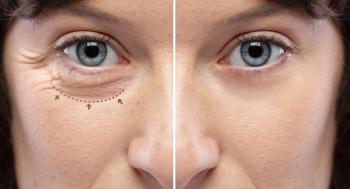
Stepped up UV protection
As summer approaches, the Vision Care Institute (VCI) is reminding ophthalmologists and the general public about the importance of protecting eyes from damage by the sun?s ultraviolet (UV) rays. The VCI, citing its study, Global Attitudes and Perceptions About Vision Care, said that although 85% of Americans recognize that UV rays can damage their eyes, only 65% wear sunglasses for protection, and even fewer (39%) make sure their children wear sunglasses.
Jacksonville, FL-As summer approaches, the Vision Care Institute (VCI) wants to remind ophthalmologists and the general public about the importance of protecting eyes from damage by the sun’s ultraviolet (UV) rays.
The VCI, citing its study, Global Attitudes and Perceptions About Vision Care, said that although 85% of Americans recognize that UV rays can damage their eyes, only 65% wear sunglasses for protection, and even fewer (39%) make sure their children wear sunglasses.
“The effects of UV radiation are cumulative over a person’s lifetime, and ocular disorders, such as cataracts, may not manifest for years, at which point the damage is already done. That’s why parents need to make sure their children get maximum protection from the sun beginning in childhood,” said Christine W. Sindt, OD, FAAO, associate professor of clinical ophthalmology, University of Iowa, Iowa City, and chair of the American Optometric Association Contact Lens & Cornea Council.
The VCI added that although most sunglasses can help block UV rays from entering through the lenses, many frame styles do not prevent rays from reaching the sides, top, and bottom of the glasses. Hats with brims do not offer protection from UV rays reflected off surfaces, such as water, sand, and pavement. The best protection is a combination of sunglasses, a wide-brimmed hat, and for some, UV-blocking contact lenses.
Keep in mind, however, that not all contact lenses offer UV protection, and of those that do, not all provide similar absorption levels. Look for contacts that carry the Seal of Acceptance for Ultraviolet Absorbing Contact Lenses from both the American Optometric Association and World Council of Optometry’s Commissions on Ophthalmic Standards. In addition, remember that although UV-blocking contact lenses provide important added protection, they should not be viewed as a stand-alone solution, and should always be worn in conjunction with high-quality UV-blocking sunglasses and a wide-brimmed hat.
Newsletter
Don’t miss out—get Ophthalmology Times updates on the latest clinical advancements and expert interviews, straight to your inbox.









































